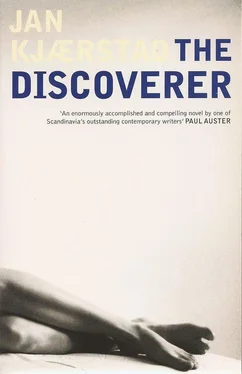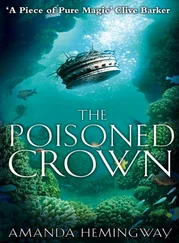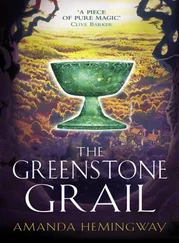Jan Kjaerstad - The Discoverer
Здесь есть возможность читать онлайн «Jan Kjaerstad - The Discoverer» весь текст электронной книги совершенно бесплатно (целиком полную версию без сокращений). В некоторых случаях можно слушать аудио, скачать через торрент в формате fb2 и присутствует краткое содержание. Год выпуска: 2009, Издательство: Arcadia Books, Жанр: Современная проза, на английском языке. Описание произведения, (предисловие) а так же отзывы посетителей доступны на портале библиотеки ЛибКат.
- Название:The Discoverer
- Автор:
- Издательство:Arcadia Books
- Жанр:
- Год:2009
- ISBN:нет данных
- Рейтинг книги:5 / 5. Голосов: 1
-
Избранное:Добавить в избранное
- Отзывы:
-
Ваша оценка:
- 100
- 1
- 2
- 3
- 4
- 5
The Discoverer: краткое содержание, описание и аннотация
Предлагаем к чтению аннотацию, описание, краткое содержание или предисловие (зависит от того, что написал сам автор книги «The Discoverer»). Если вы не нашли необходимую информацию о книге — напишите в комментариях, мы постараемся отыскать её.
The Discoverer — читать онлайн бесплатно полную книгу (весь текст) целиком
Ниже представлен текст книги, разбитый по страницам. Система сохранения места последней прочитанной страницы, позволяет с удобством читать онлайн бесплатно книгу «The Discoverer», без необходимости каждый раз заново искать на чём Вы остановились. Поставьте закладку, и сможете в любой момент перейти на страницу, на которой закончили чтение.
Интервал:
Закладка:
Jonas had cut out and saved this photograph of his grandmother. Although in world terms its significance may have been minimal — this illustration of a righteous, but hopeless struggle, an urban patriot waving her handbag at a giant crane — for him personally it had as much symbolic value as the later picture of the lone student with the shopping bags trying to stop the tanks on Tiananmen Square in Beijing — he, too, seeming to be saying: ‘Shoo! Away with you!’ It is also worth noting that with this doughty demonstration Jørgine Wergeland pretty much gave the starting signal for all the protest marches which, later in the decade, would pass along this very street, Drammensveien, on their way to the American and Soviet Union embassies.
Even before she found out about the civic vandals and their plans, Jonas’s grandmother had proudly shown him round the English Quarter, frequently in connection with a visit to Sol Cigar’s aromatic premises further down the street. Jonas thought the façades looked rather like the casing of an organ — greater compliment could no building receive. Each time they stood there on Solli plass and Granny described to him the mansion-style apartments behind the red-brick facing, with library and dining room, butler’s pantry, maid’s room, study and dressing room, she would finish by saying: ‘Remember this.’ After it was torn down, Jonas and his grandmother would, therefore, sometimes take a walk over to Lapsetorget, stand with their backs to the West Side Baths and take it in turns to describe those richly adorned buildings which they pictured rising up before them, with all their balconies and cornices, doorways and towers, as if the new Industry and Export House in its seventeen-storey tower block simply did not exist.
Jonas reaped the benefits of this powerful memory when he applied for a place at the College of Architecture. In the so-called home project which constituted the first round in the selection process and determined whether one would go on to the two-day entrance exam at the college, applicants were asked to take a well-known place and produce something which expressed their feelings about it. What Jonas Wergeland did was this: inside a box from which he had removed the two long sides he hung three panels of thin fabric, like gauze. On the first panel he painted the grey façade of the Ind-Ex building. On the fabric in the middle he painted the English Quarter, those matchless, now demolished buildings, reproducing them in minute detail, in a glowing red with yellow cornices and cornerstones. The viewer saw it as a ghostly form showing through the transparent fabric façade of the Ind-Ex building, so luminously clear and distinct that it seemed more real than the drab tower block in front of it. And on the third gauze panel, at the very back, he painted a very small, shimmering white building out of his own head, a house unlike any other. It was only just discernible through the two stretches of fabric in front of it, like a tiny, shining organ deep inside a transparent body. The funny thing was — Jonas himself would notice this eighteen years later — that this imaginary building prefigured, with uncanny exactitude, the façade of Oslo’s elegant new courthouse.
Later, one of the college professors would say that it was Jonas’s home project he had fallen for. ‘It looked almost like an X-ray photograph,’ he said. Jonas, for his part, gave his grandmother the credit. Had it not been for her rebellious spirit he would never have got into the College of Architecture.
The foundations of Jørgine Wergeland’s heroic concern for the city had, however, been laid long before her attempt to stop a monster with a demolition ball from attacking the English Quarter. Her civic mindedness, not to say passion, reached its peak immediately after the Second World War, when she suddenly came into a fair bit of money, a proper fortune, in fact.
Jørgine Wergeland was, in her own eyes, one of the victors of the war and when she unlocked the door of the flat in Oscars gate again, after a period of involuntary exile in Inkognitogaten, it was with a clear conscience that she lit a cigar and raised her fingers in a V-sign. Unlike Churchill, though, she was not only a wartime leader, but also a person capable of coping with peace. As soon as she acquired the money she instituted a conscientious search for a worthy peacetime project, a venture in which to invest it. Although she never thought of it as ‘her’ fortune. ‘It belongs to the people of Norway, and that’s that,’ she announced to a somewhat worried Åse Hansen, Jonas’s mother.
It did not take Jørgine long to see that she might have had one particular aim in mind all along, and that this might also have been the underlying motivation behind a war effort which almost surprised even Jørgine herself. The fact is, you see, that she had conceived an interest at a very early stage for the new Town Hall in Oslo — right from the time when the proposal was first put forward and an Architecture and Planning competition announced towards the end of the First World War. She followed the successive alterations to Arnstein Arneberg’s and Magnus Poulsson’s winning design as if they were episodes in a thrilling serial, the ending of which no one could predict. She enjoyed — nay, nigh on adored — monitoring the gradual metamorphosis from medieval-inspired fortress, by way of the Gothic style, National Romanticism and Neo-Classicism to four-square Functionalism. She positively cheered when she saw the final drawings, the clean lines of the main form also embodying certain historical elements. What she applauded most of all were the two block-shaped towers which gave the building a Janus-like countenance. Something inside her said: Yes, that’s just how it should be. Afterwards it would also occur to her that it made a fine, frank heraldic device for a country which had rendered such equivocal resistance during the war.
When Jørgine travelled into town from the family smallholding at Gardermoen on some errand or other, she always made a point of popping down to Pipervika to see how work on the building was progressing, especially once things speeded up in the mid-thirties and the solid mass of reinforced concrete began to rear upwards in pyramidic majesty. And many’s the time during the war when she derived encouragement and comfort from a walk down to the harbour to inspect the Town Hall, which Norway expected would be completed as soon as the bloody Germans had been run into the sea.
So when the war was over it seemed only natural that she should decide to invest her money in this. Or at least: the building was finished, but the artistic decoration of it, an uncommonly grandiose project — certainly for Norway — was far from completion. The war had not only delayed the work, it had also prompted several of the artists to make changes to their original sketches. Henrik Sørensen was now painting the return of the royal family into his vast picture on the end wall, and over at the mural in the East Gallery Per Krohg was in the midst of adding a section depicting Grini prison camp, guarded by huge, armour-plated earwigs.
In the early summer of the year after the war ended, Jørgine attended an exhibition at the Art Society in which Alf Rolfsen, a painter who had already come to her attention and who had, what is more, lost a son in the war, was showing a fresco depicting the occupation. This work was so warmly received and spawned so many letters to the newspapers that Rolfsen was asked to reproduce it as a mural for the east wall of the Town Hall’s central hall. What is not commonly known is that Jørgine Wergeland also had a large hand in this. In a letter to the people in charge of the Town Hall decorations she offered to cover the costs of Rolfsen’s long picture. Jonas’s grandmother understood something which would be lost on Norwegian politicians of the future, even at a time when the country was virtually swimming in capital: that nothing pays off better than investment in the arts. Good art creates lasting meaning, an asset which, in due course, becomes so great that it can no longer be measured in terms of money.
Читать дальшеИнтервал:
Закладка:
Похожие книги на «The Discoverer»
Представляем Вашему вниманию похожие книги на «The Discoverer» списком для выбора. Мы отобрали схожую по названию и смыслу литературу в надежде предоставить читателям больше вариантов отыскать новые, интересные, ещё непрочитанные произведения.
Обсуждение, отзывы о книге «The Discoverer» и просто собственные мнения читателей. Оставьте ваши комментарии, напишите, что Вы думаете о произведении, его смысле или главных героях. Укажите что конкретно понравилось, а что нет, и почему Вы так считаете.












